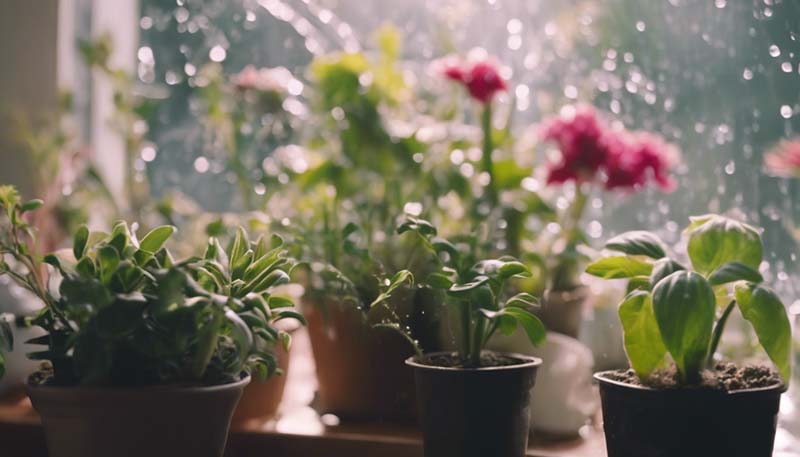Indoor Gardening: Watering Tips and Tricks
Watering is one of the most critical aspects of indoor gardening. It's not just about keeping your plants alive; it's also about promoting their health and productivity. Here are some tips and tricks to help you master the art of watering indoor plants.
Understanding Your Plants' Watering Needs
Before you start watering, it's essential to understand the specific needs of your plants. Different plants have different water requirements, and these needs can change with the seasons.
Research Your Plants
Read up on your plants' water preferences. Some plants, like succulents, need less water, while others, like tropical plants, require a more consistent watering schedule.
Advertisement
Observe the Environment
The environment in which your plants are kept can also influence their watering needs. Factors such as light, temperature, and humidity can all affect the rate at which plants use up water.
Watering Techniques
Knowing when and how to water your plants is crucial. Here are some techniques to consider:
Top Watering
This is the most common method where you pour water directly onto the soil surface. It's suitable for most plants but can encourage mold growth if the water doesn't drain well.
Bottom Watering
Place your plant in a tray of water and let the soil absorb the water from below. This method is excellent for promoting healthy root systems and preventing salt buildup in the soil.
Drip Watering
Using a drip watering system can provide a slow and steady supply of water to your plants, mimicking natural rainfall. It's ideal for plants that prefer consistent moisture levels.
Soak and Dry Method
This method involves thoroughly soaking the soil and then allowing it to dry out partially before the next watering. It's particularly beneficial for plants that prefer well-drained soil.
Water Quality and Temperature
The quality and temperature of your water can impact your plants' health:
Use Good Quality Water
Tap water can contain chemicals like chlorine and fluoride, which can be harmful to some plants. Consider using filtered water or water that has been left out to dechlorinate.

Water Temperature
The temperature of your water should be close to room temperature. Water that is too hot or too cold can shock your plants and disrupt their metabolic processes.
Tools for Watering
Having the right tools can make watering easier and more efficient:
Watering Can
A good watering can with a long spout allows for precise watering and minimizes the risk of damaging your plants.
Spray Bottle
A spray bottle is useful for misting plants that require high humidity or for applying water directly to the leaves of small plants.
Self-Watering Pots
These pots have a built-in reservoir that provides water to the plant as needed, making them ideal for plants that need consistent moisture or for when you're away from home.
Common Mistakes to Avoid
Here are some common mistakes to avoid when watering your indoor plants:
Overwatering
Overwatering is a common mistake that can lead to root rot and other issues. Always check the soil moisture before watering.
Underwatering
Underwatering can cause plants to become stressed and wilt. Establish a regular watering schedule based on your plants' needs.
Watering at the Wrong Time
Watering at night can lead to increased humidity, which can encourage the growth of mold and mildew. It's best to water in the morning or early afternoon.
Conclusion
Indoor gardening can be rewarding, but it requires careful attention to your plants' watering needs. By understanding your plants, using the right techniques, and avoiding common mistakes, you can create a healthy and thriving indoor garden.
Note: Always remember that every plant is unique, and it's essential to observe your plants' responses to your watering practices and adjust as necessary.
Comment